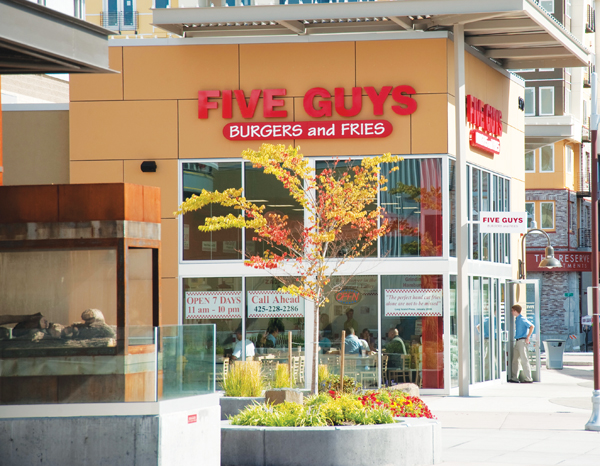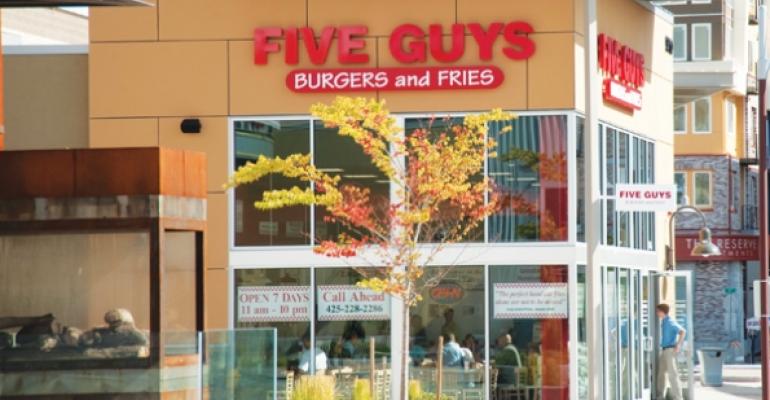The fast-casual sector may be small, but it’s growing more rapidly than the rest of the industry and is well-positioned to emerge as the next big restaurant segment, according to new data from market research firm The NPD Group.
“Fast-casual concepts are in an excellent position for growth and are forecast to continue on a strong growth path over the next decade,” NPD analyst Bonnie Riggs said.

While it only represents 7 percent of all quick-service chain units, fast casual accounted for 23 percent of the quick-service chain unit increases from fall 2009 to fall 2012, according NPD’s ReCount data.
Since the economic downturn from fall 2009 to spring 2010, the increase in industry units — which has been very small — has come largely from quick-service chains, which includes fast-casual concepts, NPD says.
“We saw a very slight increase in the number of restaurants. That’s certainly fueled by the fast-casual segment,” said Greg Starzynski, NPD director of product development and foodservice, and leader of ReCount. “Consumers have responded well to these concepts.”
NPD’s latest study shows that the major fast-casual brands increased their unit counts by double-digit rates over the last several years. For the year ended fall 2012, Chipotle Mexican Grill, Panera Bread, Five Guys Burgers and Fries, Panda Express, and Einstein Bros. Bagels ranked as the top five fast-casual players in terms of unit growth, NPD said, adding that most of those brands have been the leaders for several years. From fall 2005 through fall 2012, the top five fast-casual brands in terms of unit growth were Five Guys, Chipotle, Panera Bread, Panda Express and Qdoba Mexican Grill.

Some of those leading brands added upward of 100 units in the year ended fall 2012.
For that same year ended fall 2012, the top-growing chains by percent unit change were The Habit Burger Grill, Freebirds World Burrito, Raising Cane’s Chicken Fingers, Capriotti’s Sandwich Shop and Potbelly Sandwich Works, NPD found. Five Guys, Shane’s Rib Shack, Bajio Mexican Grill, Spicy Pickle and Golden Krust Caribbean Bakery were the top brands in percent unit change between fall 2005 and fall 2012.
Customer satisfaction
Part of what is driving the rapid increase in the number of fast-casual units is simply that consumers are satisfied with what the segment has to offer, according to NPD.
“Even with this unit growth, demand outpaced the rate of unit expansion, indicating consumer satisfaction with the fast- casual experience,” said Riggs, who tracks consumer behavior at restaurants for NPD. “Reflecting higher levels of satisfaction, several leading chains have built strong customer loyalty.”

NPD is not the only industry research firm to underscore the growing strength and increasing reach of fast-casual players. Last year Chicago-based research firm Technomic found that sales and unit growth at the country’s largest fast-casual brands are outpacing that of the overall restaurant industry.
According to Technomic’s “Top 150 Fast-Casual Chain Restaurant Report,” the 150 largest fast-casual brands grew sales by 8.4 percent to $21.5 billion combined in 2011 compared with a year earlier. That sales growth climbed from 6.6 percent in 2010. By comparison, sales at the 500 largest restaurant chains across industry segments rose only by an aggregate 3.5 percent in 2011.
The Technomic report also found that fast-casual chains grew their unit counts more aggressively than the foodservice industry as a whole. In 2011 the 150 largest fast-casual brands showed a total unit-count growth of 5.2 percent, versus a 0.7-percent hike for the 500 largest restaurant chains across all industry segments.
Darren Tristano, an executive vice president at Technomic, said fast-casual chains occupy a restaurant “sweet spot” and are recognized for having fast service, fresh food, fair price points and well-developed takeout and catering operations.
Predicting the future
But as fast casual’s rapid growth continues, many in the industry are questioning just how far the segment can go and how many more of these concepts consumers can actually support. Dennis Lombardi, a foodservice consultant with Columbus, Ohio-based WD Partners, and Aaron Allen, a global restaurant consultant, both of whom closely watch the fast-casual segment, offered their takes on the fast-casual phenomenon.
“Billions and billions [of dollars] are pouring into fast casual, both in consumer dollars and investments,” Allen said. “It feels more relevant [to consumers]. You don’t have to tip, [and] they’re doing a better job of marketing.”

And from an investment perspective, “the unit economics are just so much better in fast casual,” he added.
For Allen, it’s not just the growth of a segment, but also an evolution in the way restaurants do business. Fast casual has created a more efficient version of the old full-service restaurant, he said. The three biggest costs in running a restaurant — food, labor and occupancy — are significantly reduced compared to full service. Start-up costs are dramatically lower, as well, he added.
“[Fast casual] is really an evolution of the business model,” Allen said. “There’s demand, and you can be more profitable opening this business model versus the casual-dining model, which is why people are pouring billions into it.”
WD’s Lombardi said he also sees a progression, comparing fast-casual’s growth story to the start of the quick-service segment 50 years ago.
“We’re seeing what is the evolution of a segment — what is very possibly going to become a major segment of the industry,” Lombardi said.
Like NPD’s Riggs, both Lombardi and Allen forecast that fast casual will continue to grow strongly for many years to come.

“[Fast casual] will, in my opinion, outpace the industry for another five to 10 years,” Lombardi said. “I think it’s going to be a consistent area of growth.”
“I think we’ll see it for the next decade before it starts to slow down,” Allen said. “They’ll find all sorts of ways to differentiate the product. What we’ll see is an expansion of [existing] cuisines and the introduction of new cuisines.”
Neither could point to much that might get in the way of this segment, either. If something did slow it down, Lombardi said it would likely be an economic issue that would impact all segments of the industry.
“If [fast casual] doesn’t grow in 2015,” said Lombardi, “nothing else will, either.”
Nation’s Restaurant News has an exclusive agreement to obtain the NPD Group data and research findings that appear on the Consumer Trends page.




